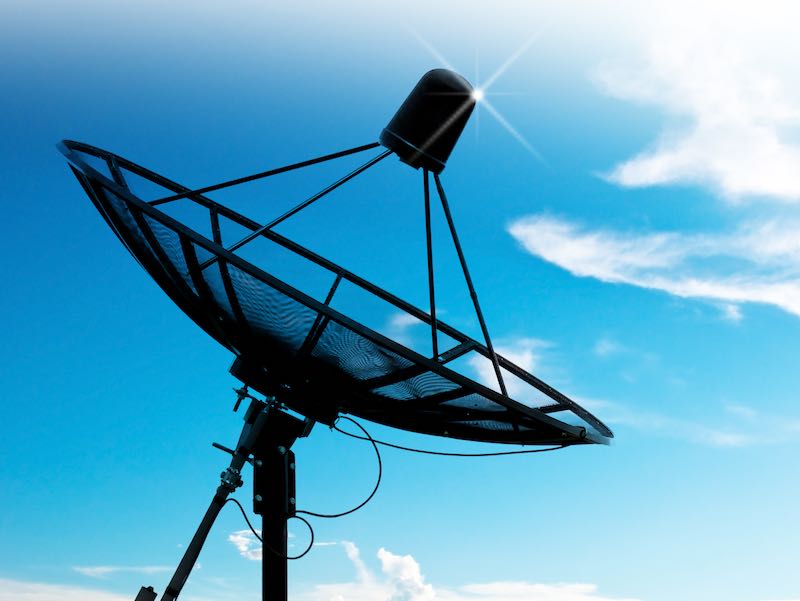Order and Notice of Proposed Rulemaking – GN Docket No. 18-122
Today the FCC approved an Order and Notice of Proposed Rulemaking for Expanding Flexible Use of the 3.7 to 4.2 GHz Band. The document proposes expanded terrestrial use of the band and seeks comment on the mechanisms for integrating new and incumbent use. It also seeks to collect specific information about earth stations and space stations currently operating in the 3.7-4.2 GHz band.
Coming on the heels of a freeze on applications for new earth stations and space stations in 3.7-4.2 GHz band, this proceeding will have major consequences on incumbent satellite and earth station operators, as well as satellite service providers and end users. While this proceeding does not affect earth station operations in the corresponding uplink band at 5.925-6.425 GHz, the hard-coded pairing of C-band uplink and downlink frequencies will inevitably have impacts on the uplink band and an associated rulemaking proceeding is under consideration by the FCC.
The Order seeks additional information about current users of the 3.7-4.2 GHz band. Earth station operators are requested to provide the following types of information for each antenna:
- call sign (or IBFS file number if a registration is pending);
- licensee and point of contact information;
- geographic location and antenna operating parameters;
- satellite(s) at which the earth station is pointed, transponder used and frequency of use;
- certification that the earth station was constructed and operational as of April 19, 2018.
Satellite operators in the 3.7-4.2 GHz band are requested to provide the following types of information:
- satellite call sign, name, orbital location and expected end-of-life;
- approximate launch dates for additional C-band satellites with pending applications and which do not yet have pending applications;
- active transponders and frequency of use to serve the United States;
- center frequency and bandwidth of TT&C beam(s), and call sign and geographic location of TT&C receive site(s).
The Notice of Proposed Rulemaking seeks comment on the future of incumbent use of the band and proposes mechanisms for expanding flexible terrestrial use. The FCC examines the current 3.7-4.2 GHz band plan and invites feedback on possible changes to this plan.
Incumbent Use. The FCC suggests the possibility of separating incumbents into different classes based upon length and frequency of operations, including those that still have the ability to register earth stations during the 90-day extension window. The FCC seeks comment on whether to codify the temporary freezes that have been placed on applications for satellite licenses and registrations, except in cases of existing space station authorizations. The FCC also considers reexamination of the full-band, full-arc policy for earth station operations in 3.7-4.2 GHz, and seeks input on the current and future economic value of fixed-satellite service (“FSS”) in that band.
Mechanisms for Expanding Flexible Use. The FCC proposes to add a co-primary Mobile allocation to the 3.7-4.2 GHz band and license the band for flexible mobile use (“MBX”) on an exclusive, geographic area basis. The FCC requests input on protection criteria for FSS earth stations from MBX mobile use. Nevertheless, in apparent recognition that co-frequency “sharing” will be difficult at best, the FCC focused on three different potential mechanisms for clearing incumbent users out of some or all of the band, in order to facilitate expanded flexible MBX use: a market-based approach, an auction approach, or some combination of the two.
The market-based approach would utilize a cooperative entity created by satellite operators to coordinate negotiations with terrestrial operators and clear and repack the spectrum. The FCC would have a review and authorization role in this process.
The FCC suggests four possible auction mechanisms: an overlay auction, an incentive auction, a capacity auction, or a combination of the foregoing. For each of the mechanisms described, the FCC requests an analysis of the economic benefits and disadvantages of the plan as well as means of protecting incumbents. The FCC also requests comment on implementing point-to-multipoint terrestrial fixed services, allocating spectrum for flexible terrestrial use in the lower segment in the band, and the possibility of Ku-band capacity as a replacement for C-band.
Band Plan. The FCC notes that the current band plan for incumbent terrestrial fixed service (chiefly fixed point-to-point microwave links) is segmented into 20 megahertz channels, but that it does not necessarily need to remain this way. It seeks feedback on proposals to create larger channels, or to have channels of different sizes depending on the needs and uses of operators.
Further information regarding the effective date of the Order and Notice, and the comment filing dates, will be published shortly in the Federal Register. The FCC has not yet released the final text of its proposal, but the FCC’s News Release announcing its action can be found here, and a public draft of the FCC’s Order and Notice of Proposed Rulemaking for Expanding Flexible Use of the 3.7 to 4.2 GHz Band can be found here.
Please feel free to contact Carlos Nalda, Richard Cameron, or any of the LMI Advisors team if you have any questions or would like to discuss the scope or impact of the FCC’s proposals.

